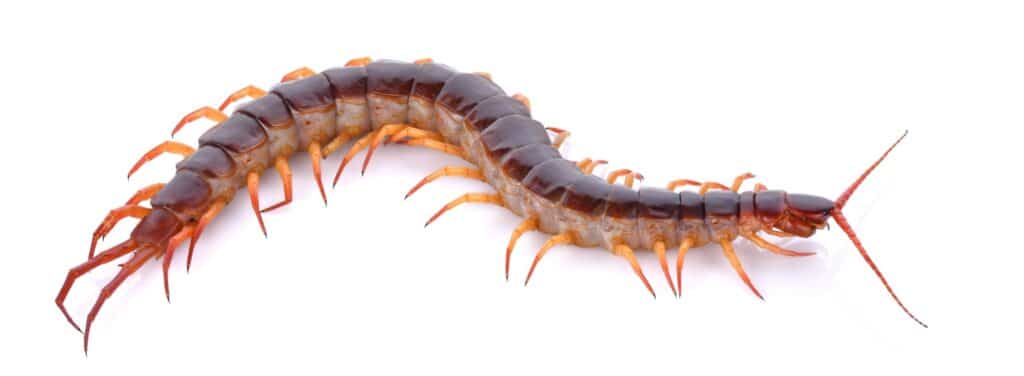What are centipedes?
Centipedes are many-legged invertebrate animals, closely related to millipedes and fruit flies. These small creatures range in size, with some only one centimeter long, while others can be several inches in length. Centipedes have segmented bodies made up of multiple sections, and an odd number of legs. On each body section, there is one pair of antennae and between 15 to 177 pairs of legs. Although the legs may appear fragile, they actually are home to poisonous claws used to capture prey. The color of centipedes varies from species to species, but they’re usually shades of brown, orange, red and yellow.
Habitats of centipedes
Centipedes are mostly found outdoors in damp environments, under rocks and around logs, or even in leaf debris. They feed on a variety of different insects and arthropods, including spiders, worms and fruit flies. Although centipedes are usually found outside, some species have adapted to live inside houses or apartments. They prefer dark, moist habitats such as basements, bathrooms, closets and crawl spaces. These are places they can easily find food and build their nesting ground.
Damage caused by centipedes:
It’s great that centipedes can feed on other unwanted insects, like spiders, bedbugs, silverfish and fruit flies, but they can cause harm to other items around the house. In addition to their usual diet, they also enjoy sucking the sap out of plants and flowers, and their long legs often carry bacteria that could potentially infect food. Centipedes also bite, which can cause swelling, itching and redness, similar to a bee sting. People allergic to bee stings will often react to the venomous bite of a centipede.
Controlling and eliminating centipedes
Controlling and eliminating centipedes around the house isn’t too difficult. Keeping rooms clean, especially around windows, outside doors and other entry points, will reduce the chances of a centipede entering the home. It’s also a good idea to make sure all cracks or crevices are sealed tightly. If centipedes seem like they’re a persistent problem, contact a trained and licensed pest technician with United Pest and Turf.
What you need to know about centipedes in North Alabama and Southern Tennessee
Serving North Central Alabama and South Central Tennessee
Limestone County
Ardmore
Home » What you need to know about centipedes


